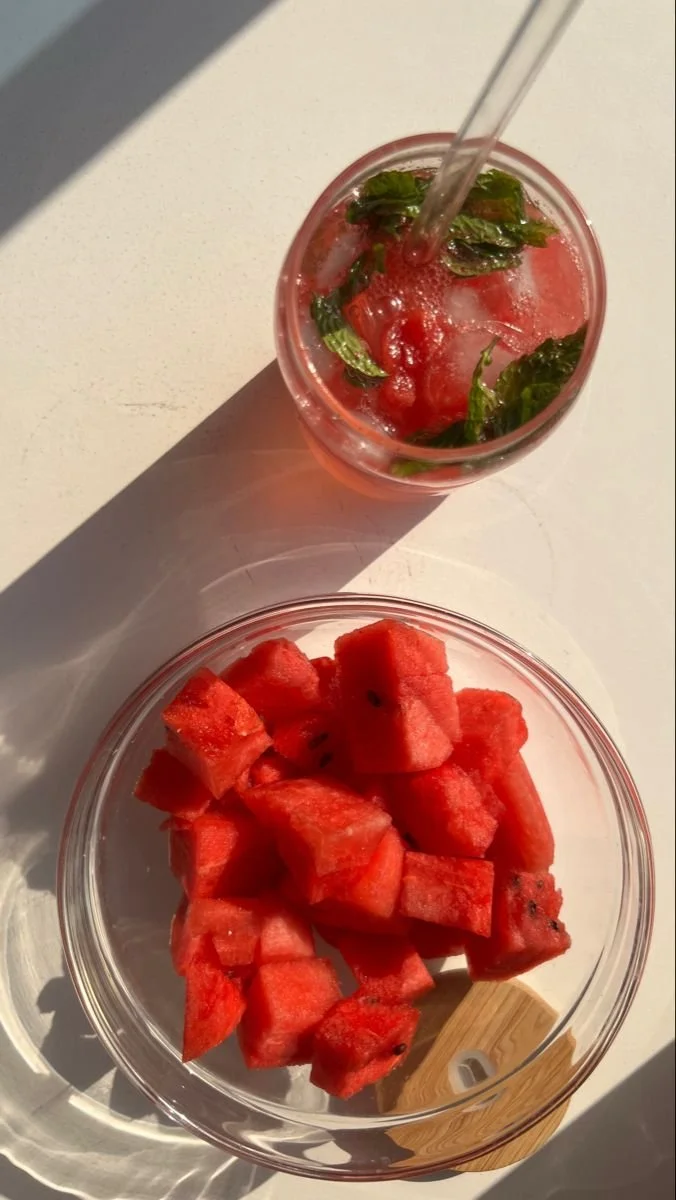Glow from the Grocery Aisle: Hydrating Foods That Keep You Radiant All Summer
When the heat index climbs and your camera roll turns into a highlight reel of pool days and golden-hour walks, your skin has one request: more water. And not just from a bottle. Roughly one-fifth of our daily fluid intake can come from what’s on your plate, which is great news for anyone bored of chugging plain water. Summer produce is naturally high in water, electrolytes, and phytonutrients that help you stay hydrated, energized, and yes, noticeably glowier. Think of it as skin care from within.
Eat Your Water (and Why It Works)
Hydration is about fluid and balance. Plain water is essential, but pairing water with minerals and small amounts of carbohydrate helps your body hold onto it. That’s where fruits and vegetables shine: they deliver water wrapped in fiber, potassium, and antioxidants, which support normal fluid balance while also feeding your cells. Public-health guidance pegs total daily fluid needs at about 11 cups for most women and 15 cups for most men (from beverages and foods), and summer produce can effortlessly supply a meaningful slice of that target without feeling like a chore.
Trend-Forward Hydration: What’s Blowing Up Your Feed
Your FYP is already dropping hints. #WaterTok spawned “spa waters” (cucumber, mint, and citrus in an iced pitcher), #WaterySnacks celebrates juicy produce, and “glow cubes” turned watermelon purée into the chicest ice ever. Social media trends can actually help you stay consistent. When hydration looks fun, you’ll do it more often. Try these easy, scroll-worthy ideas:
Watermelon glow cubes: Purée seedless watermelon and freeze in trays; pop into sparkling water or mocktails.
Cucumber-mint carafe: Keep a two-quart pitcher in the fridge and refill after every pour.
Fruit-on-fruit pops: Blend strawberries with coconut water, pour into molds, and freeze for a post-walk refresher.
Hydration MVPs (and How to Use Them)
Watermelon (~92% water): The summer icon for a reason. It’s light, sweet, and naturally rich in potassium. Toss cubes with a squeeze of lime and a pinch of flaky salt after sweaty workouts, or skewer into freezer-cold “kebabs” for a park snack.
Cucumber (~96% water): The crunch that goes with everything. Slice into rounds for “chip” vibes, ribbon with a peeler into salad, or blend into a five-minute gazpacho with yogurt and dill. Keep the peel on for texture and less prep.
Strawberries (~91% water): Hydrating and dessert-friendly. Smash a handful into chia pudding so your morning spoon delivers water and fiber, or fold into yogurt-bark that breaks with a satisfying crack.
Tomatoes (~94% water): Peak-season tomatoes are a hydration snack masquerading as a side dish. Drizzle with olive oil and a pinch of salt for a simple salad, blitz into salsa for taco night, or roast low and slow to concentrate flavor without losing juiciness.
Romaine and iceberg (94–96% water): Lettuce is having a comeback as the ultimate crunchy carrier. Double up leaves for bun-less burgers or pile with chopped veggies and a tangy vinaigrette. (Pro move: add orange segments for a juicy, hydrating pop.)
Bell peppers (~92% water): Naturally sweet, endlessly dippable. Slice into “boats,” fill with herbed cottage cheese, and top with everything-bagel seasoning for a high-volume, high-water snack.
Coconut water: Nature’s light electrolyte drink thanks to potassium. It’s a sensible option after longer or sweatier sessions; pour into ice-cube trays for “electrolyte cubes” that chill smoothies without watering them down.
Hydration, But Make It Practical
Stack habits.
While your coffee brews, slice a cucumber and wash a pint of strawberries. Set a water-rich snack next to your laptop so you autopilot your way to better hydration.
Balance electrolytes.
Most daily hydration can come from water and water-rich foods. After longer workouts or time in humid heat, rehydrate with fluids plus electrolytes from coconut water, a light sports drink, or a sprinkle of salt on juicy fruit.
Mix sip and chew.
Aim to hit your fluid target with both beverages and produce. A good rule for summer: include at least one high-water food at every meal and one as a snack (e.g., watermelon at lunch, cucumber salad at dinner, strawberries in the afternoon).
Make it social.
Bring a “spa water” pitcher to picnics and potlucks, or a tray of fruit pops for post-practice hangs. When hydration is communal, you’re more likely to keep it going.
The Bottom Line
Summer hydration doesn’t have to mean babysitting a gallon jug. If you build your plate around juicy produce, add a few electrolyte-savvy moments, and lean into the fun of trends (hello, glow cubes), you’ll check the boxes for fluid, minerals, and phytonutrients, without thinking too hard about any of it. Your body will thank you with steadier energy, faster recovery from heat and workouts, and that lit-from-within glowy look.
Works Cited
Centers for Disease Control and Prevention. “Get the Facts: Drinking Water & Intake.” CDC, www.cdc.gov/nutrition/data-statistics/plain-water-the-healthier-choice.html.
Harvard T.H. Chan School of Public Health. “Water.” The Nutrition Source, www.hsph.harvard.edu/nutritionsource/water/.
Kalman, Douglas S., et al. “Comparison of Coconut Water and a Carbohydrate–Electrolyte Sport Drink on Measures of Hydration and Physical Performance in Exercised Men.” Journal of the International Society of Sports Nutrition, vol. 9, no. 1, 2012, p. 1, doi:10.1186/1550-2783-9-1.
National Academies of Sciences, Engineering, and Medicine. Dietary Reference Intakes for Water, Potassium, Sodium, Chloride, and Sulfate. The National Academies Press, 2005.
U.S. Department of Agriculture, Agricultural Research Service. FoodData Central. fdc.nal.usda.gov.

